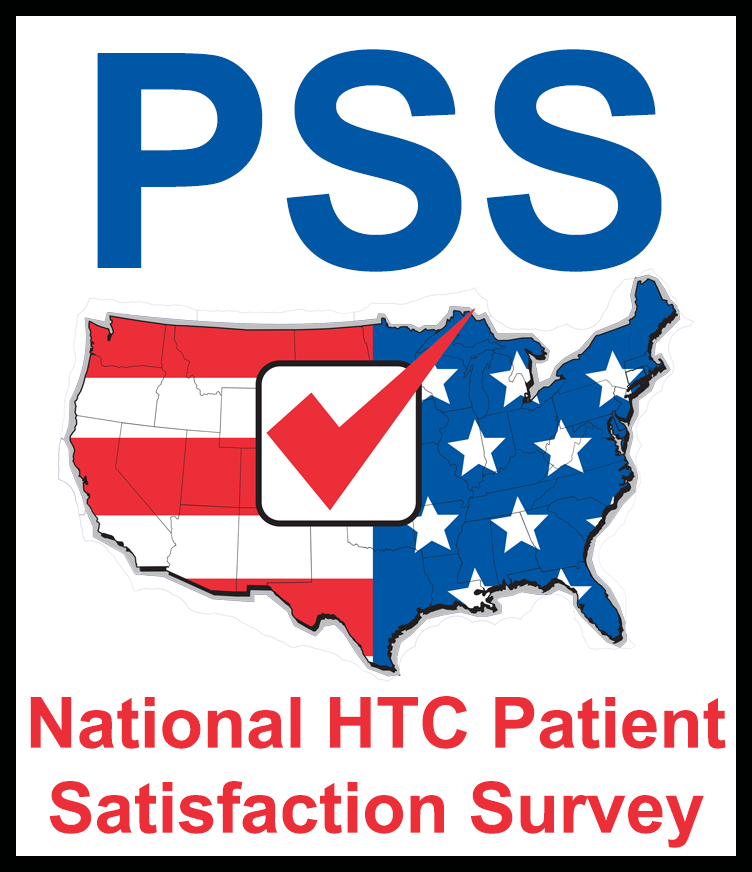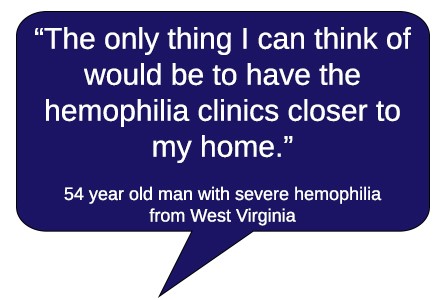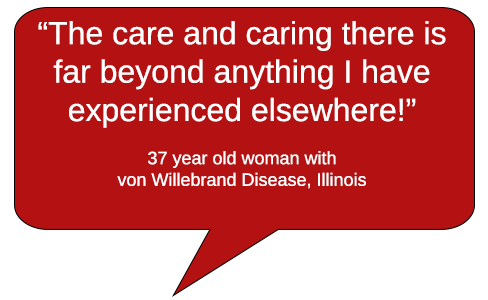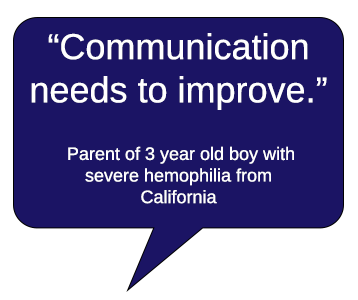Over 5,000 Respond to National Survey of US Hemophilia Treatment Centers
Horizons in Hemophilia, Summer, 2016
 What do people with bleeding disorders really think about their Hemophilia Treatment Center (HTC)? How satisfied are they with their care? Are there groups of patients that have specific problems with getting the HTC services they need? These are some of the questions that over 5,000 people with bleeding disorders answered in the first national survey of HTC patient satisfaction.
What do people with bleeding disorders really think about their Hemophilia Treatment Center (HTC)? How satisfied are they with their care? Are there groups of patients that have specific problems with getting the HTC services they need? These are some of the questions that over 5,000 people with bleeding disorders answered in the first national survey of HTC patient satisfaction.
What is the National HTC Patient Satisfaction Survey?
In early 2015, HTCs in the United States sent out a survey to their patients called the Patient Satisfaction Survey (PSS). The two-page PSS was designed using questions similar to other national surveys using input from the 10 HTC Regional Coordinators. The intent was to measure the level of satisfaction with care that people received at their local HTC during 2014. Each center mailed paper copies to their patients or provided an online option. While all surveys were anonymous, the form indicated the name of the center where the patient received care. Patients returned completed surveys to the HTC at the University of Colorado, which compiled and shared the results with each region and center.
Why Was the Survey Conducted?

While many centers have conducted their own satisfaction surveys in the past, this was the first survey of how HTCs nationwide are doing. The surveys were sent from 133 centers to over 28,000 patients or their caregivers, representing over 95% of all HTCs in the US. The feedback is valuable to centers and delivers a snapshot of national, regional and local views of success and areas for improvement. Patients responding included those with bleeding disorders, such as hemophilia A, hemophilia B and von Willebrand Disease. The survey was in both Spanish and English; asked about severity, age, race and ethnicity; and, allowed people to rank the level of satisfaction with care received. Questions included the option to write in comments on what their center was doing well or how it could improve.
as hemophilia A, hemophilia B and von Willebrand Disease. The survey was in both Spanish and English; asked about severity, age, race and ethnicity; and, allowed people to rank the level of satisfaction with care received. Questions included the option to write in comments on what their center was doing well or how it could improve.
What will be done with the results?
The PSS responses describe satisfaction with HTC care throughout the country. While most surveys showed a high level of satisfaction, some responses were not as positive. The results showed that patients have different challenges with their care around the country, including insurance access, language barriers and communication with staff. Patients described what worked well at their center and what did not, providing details to the HTC  that may not have been received as openly from patients in person. This vital patient feedback helps all centers focus on what services need to be improved at the local, regional and national levels.
that may not have been received as openly from patients in person. This vital patient feedback helps all centers focus on what services need to be improved at the local, regional and national levels.
The results of the 2014-2015 Patient Satisfaction Survey led national leaders to agree that surveys should be sent out every two years to see if positive change is occurring at centers over time and to help identify trends in patient satisfaction. The hope is that an increased number of patients will participate, growing the feedback regarding satisfaction, which is an important measure of quality of care. The next survey is tentatively scheduled for 2017. Regional HTC leadership thank all patients and caregivers who participated and the HTCs for their collaboration.
For more information visit www.htcsurvey.com.
